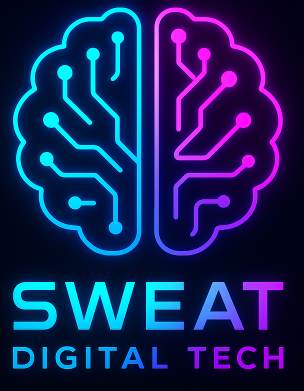Meta, formerly known as Facebook, has recently announced the release of LLaMA 3.1, the latest version of its advanced language model family. This new iteration is packed with innovative features and significant improvements that mark a substantial step forward in artificial intelligence (AI) technology. In this article, we will delve into the advancements brought by LLaMA 3.1, explore its new functionalities, and examine how it continues to drive technology innovation. We will also present relevant examples, case studies, and statistics to provide a comprehensive understanding of this cutting-edge AI model.
1. Introduction to LLaMA 3.1
Overview of LLaMA Models
Meta’s Large Language Model for AI (LLaMA) series has been at the forefront of natural language processing (NLP) and understanding. These models are designed to comprehend and generate human-like text, enabling a wide range of applications across various domains. Since the release of LLaMA 1.0, Meta has continuously improved its models, incorporating the latest advancements in AI research and technology.
The Importance of LLaMA 3.1
LLaMA 3.1 represents the latest addition to this esteemed line of language models. It builds on the foundations laid by its predecessors, offering enhanced capabilities, better performance, and more extensive functionalities. The release of LLaMA 3.1 is particularly significant as it embodies Meta’s commitment to pushing the boundaries of what AI can achieve in understanding and generating human language.
2. Key Features and Improvements in LLaMA 3.1
Enhanced Language Understanding
One of the standout features of LLaMA 3.1 is its improved language understanding capabilities. This enhancement is critical for applications that require nuanced comprehension and context awareness.
- Contextual Awareness: LLaMA 3.1 can maintain context over longer text passages, making it particularly useful for applications like summarisation, translation, and dialogue systems.
- Semantic Analysis: The model features advanced semantic analysis capabilities, allowing it to better understand the meaning behind words and phrases, leading to more accurate and relevant responses.
Expanded Multilingual Support
In today’s globalised world, the ability to handle multiple languages is crucial. LLaMA 3.1 expands its multilingual capabilities, supporting a wider array of languages with greater accuracy.
- Language Diversity: The model now covers more languages, including those that are less commonly spoken, providing more inclusive AI solutions.
- Improved Translation Quality: Enhanced translation algorithms offer more accurate and natural translations, helping bridge language barriers effectively.
Optimised Performance and Efficiency
LLaMA 3.1 introduces several optimisations that boost its performance and efficiency, making it suitable for a broader range of applications.
- Reduced Latency: The model features reduced inference times, allowing for faster processing of input data and quicker generation of responses.
- Lower Resource Consumption: Optimisations in the model architecture reduce resource requirements, making it more accessible for deployment in various environments, including edge devices.
3. New AI Functionalities in LLaMA 3.1
Advanced Dialogue Systems
LLaMA 3.1 brings significant improvements to dialogue systems, enhancing their ability to engage in meaningful and context-aware conversations.
- Contextual Memory: The model retains context over extended dialogues, enabling more coherent and relevant interactions even in long conversations.
- Emotion Recognition: Advanced emotion detection capabilities allow the model to recognise and respond to emotional cues, improving user experience in customer service and virtual assistant applications.
Improved Content Generation
Content generation applications stand to benefit greatly from the enhanced capabilities of LLaMA 3.1.
- Creative Writing: The model can generate high-quality creative content, including poetry, stories, and articles, making it a valuable tool for writers and content creators.
- Automated Summarisation: LLaMA 3.1 excels at summarising long documents, extracting key information while maintaining coherence and accuracy.
Case Study: Content Generation for Journalism
A leading news organisation leveraged LLaMA 3.1 to automate the generation of news summaries. The model’s ability to understand context and produce coherent summaries significantly enhanced the efficiency of the newsroom, allowing journalists to focus on in-depth reporting.
4. Application of LLaMA 3.1 in Various Domains
Healthcare
In the healthcare sector, LLaMA 3.1’s advanced language understanding capabilities can be applied to improve patient care and streamline administrative tasks.
- Clinical Documentation: The model can assist healthcare providers in generating accurate and detailed clinical notes from doctor-patient interactions, reducing the administrative burden and improving patient care.
- Patient Support: Advanced dialogue systems powered by LLaMA 3.1 can offer responsive and context-aware virtual health assistants, enhancing patient engagement and support.
Education
In education, LLaMA 3.1 can be utilised to enhance learning experiences and support personalised education.
- Intelligent Tutoring Systems: The model can power intelligent tutoring systems that offer personalised feedback and support to students, helping them grasp complex concepts more effectively.
- Educational Content Creation: LLaMA 3.1’s content generation capabilities can be used to create high-quality educational materials, including quizzes, summaries, and interactive content.
Case Study: Virtual Tutor in Education
A leading online education platform used LLaMA 3.1 to develop a virtual tutor that provides personalised assistance to students. The tutor’s ability to understand context and offer relevant support improved student engagement and learning outcomes.

5. Technology Developments and Future Directions
Integration with Other AI Models
Meta aims to integrate LLaMA 3.1 with other AI models to create more comprehensive and potent AI solutions.
- Multimodal AI: Integration with computer vision models will enable the creation of multimodal AI systems capable of understanding and generating content that combines text and images.
- AI-Powered Analytics: Combining LLaMA 3.1 with advanced data analytics models will offer deeper insights and predictive analytics in various sectors, from healthcare to finance.
Continuous Innovation and Development
Meta is committed to continuous innovation and development in the field of AI. Future updates to LLaMA are expected to bring further improvements and new functionalities:
- Improved Accuracy: Ongoing research will focus on enhancing the model’s accuracy and reducing biases, ensuring fairer and more reliable AI systems.
- Scalability: Future versions of LLaMA will aim to further reduce resource requirements and enhance scalability, making advanced AI accessible to a wider range of applications and users.
Conclusion: Key Takeaways
The release of LLaMA 3.1 represents a significant leap forward in artificial intelligence technology. This latest version introduces numerous new features and improvements that enhance its versatility and performance, making it a powerful tool for various applications. Key takeaways from this exploration include:
- Enhanced Language Understanding: LLaMA 3.1’s improved contextual awareness and semantic analysis capabilities offer more accurate and relevant language understanding.
- Expanded Multilingual Support: The model’s ability to handle a wider array of languages with greater accuracy makes it an inclusive AI solution for the global market.
- Optimised Performance: Reduced latency and lower resource consumption make LLaMA 3.1 suitable for deployment across diverse environments, including edge devices.
- Advanced AI Functionalities: Improved dialogue systems, content generation, and AI-powered analytics illustrate the model’s potential to drive innovation across various domains.
- Future Developments: Meta’s commitment to continuous innovation ensures that LLaMA will continue to evolve, integrating with other AI models and incorporating new advancements.
As Meta continues to push the boundaries of AI research and development, LLaMA 3.1 stands out as a testament to the incredible progress being made in the field. Its new features and improvements underline its potential to transform industries and improve various aspects of our lives, reaffirming that we are just beginning to tap into the possibilities of artificial intelligence.




